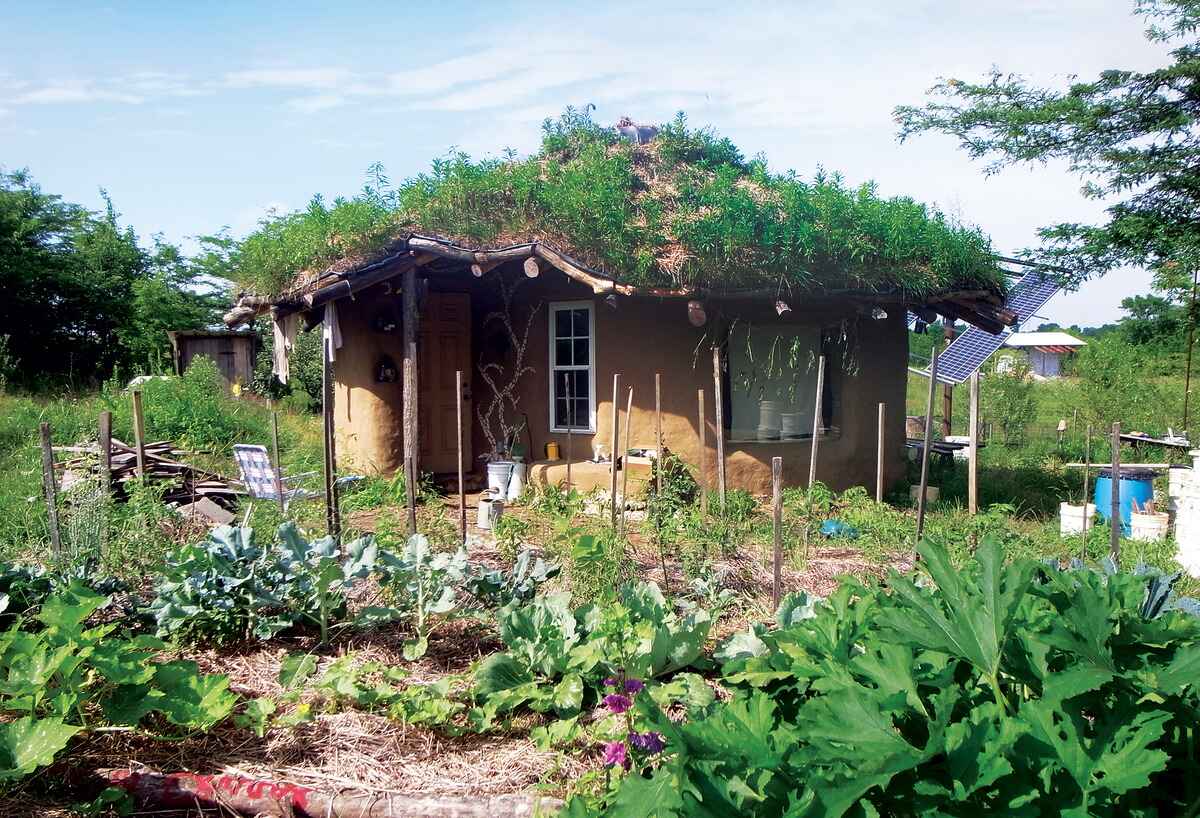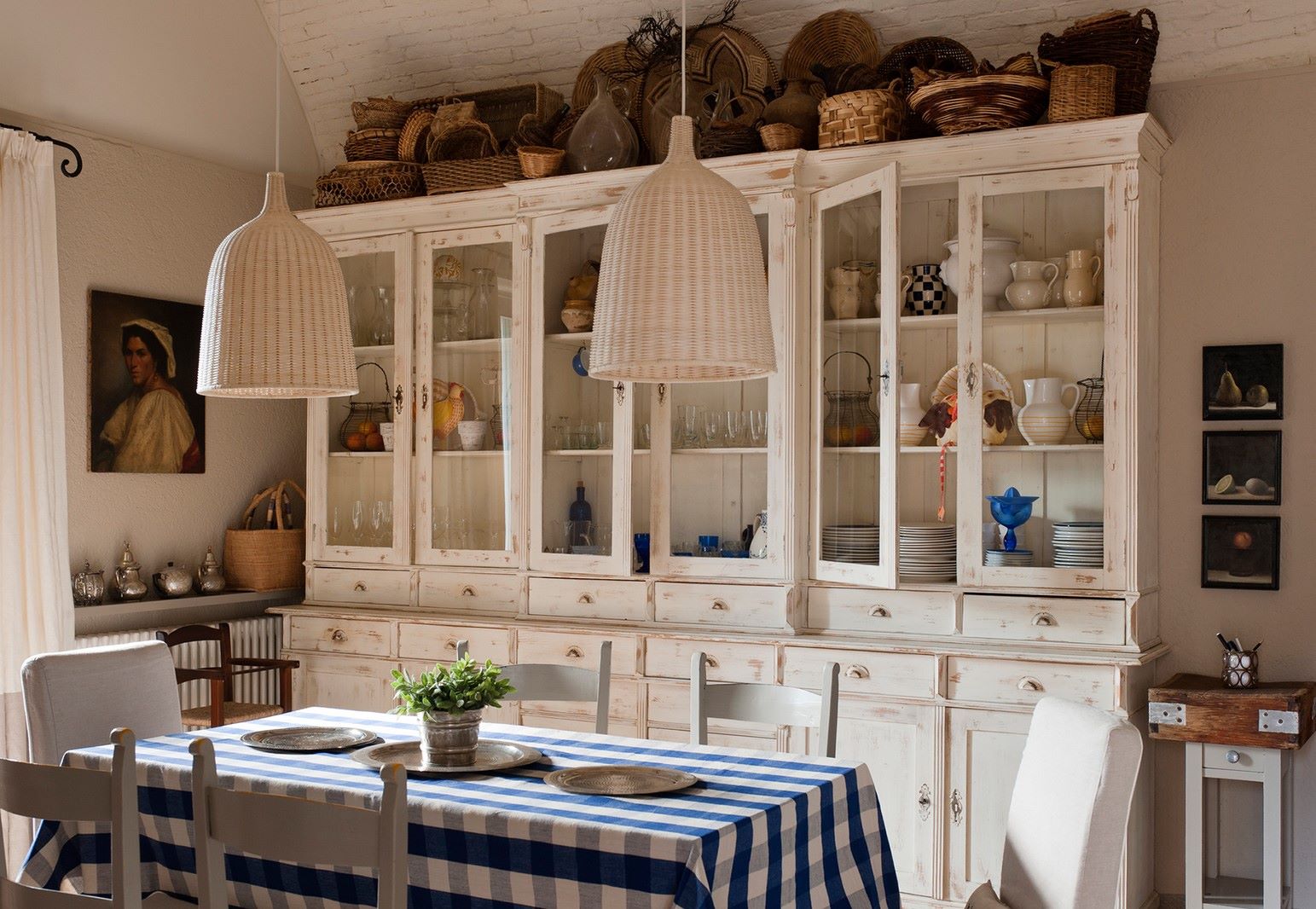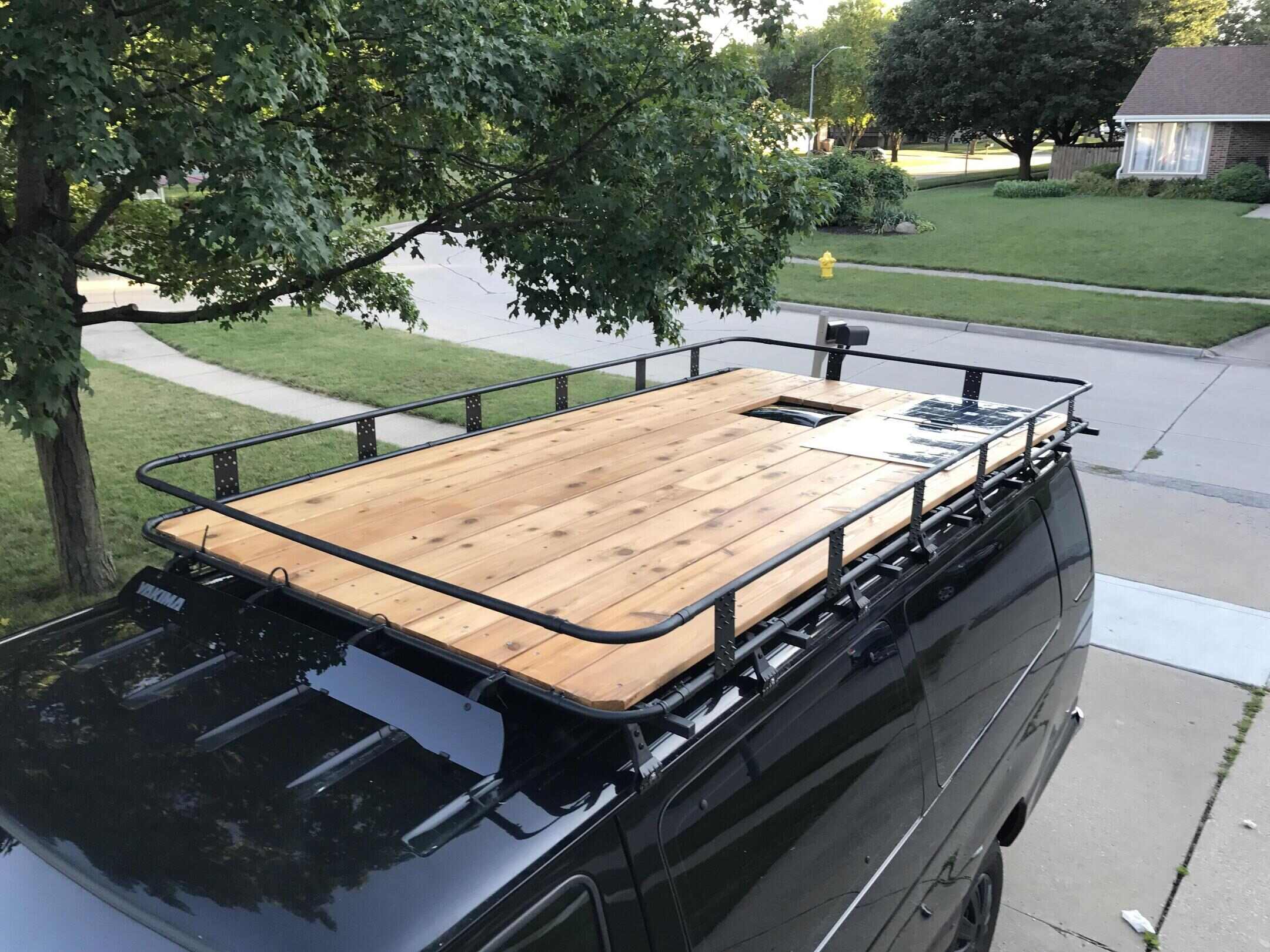Home>Create & Decorate>DIY & Crafts>Cob House Construction: A DIY Guide To Building Your Own Sustainable Home


DIY & Crafts
Cob House Construction: A DIY Guide To Building Your Own Sustainable Home
Published: May 28, 2024

Content Creator specializing in woodworking and interior transformations. Caegan's guides motivate readers to undertake their own projects, while his custom furniture adds a personal touch.
Learn how to build a sustainable cob house with our comprehensive DIY guide. Discover eco-friendly construction techniques and create your dream home. Ideal for DIY & Crafts enthusiasts.
(Many of the links in this article redirect to a specific reviewed product. Your purchase of these products through affiliate links helps to generate commission for Twigandthistle.com, at no extra cost. Learn more)
Introduction
Are you looking to build your own sustainable home? Have you considered the unique and eco-friendly option of cob house construction? In this DIY guide, we will explore the ins and outs of building a cob house, from understanding the construction process to the benefits of living in one. Whether you're a seasoned builder or a novice DIY enthusiast, this guide will provide you with the essential knowledge and steps to embark on your cob house construction journey. Let's dive in and discover the world of cob house building!
Read more: How to Build an Arch Door Frame
Understanding Cob House Construction
Cob house construction is a traditional building technique that involves using a mixture of clay-rich soil, sand, and straw to create sturdy and sustainable structures. This ancient method has been utilized for centuries in various parts of the world, and its resurgence in modern times is attributed to its environmentally friendly nature and the abundance of natural materials required for construction. The word "cob" itself is derived from an Old English term meaning a lump or rounded mass, which aptly describes the technique of hand-sculpting the mixture into walls and other architectural elements.
Key Characteristics of Cob Construction
- Sustainability: Cob houses are renowned for their eco-friendly attributes, as they rely on locally sourced materials and minimal use of industrial resources.
- Thermal Mass: The dense nature of cob walls provides excellent thermal mass, effectively regulating indoor temperatures and reducing the need for additional heating or cooling.
- Versatility: Cob can be molded into various shapes and forms, allowing for creative and organic architectural designs.
- Durability: When properly maintained, cob structures can withstand the test of time, showcasing their resilience and longevity.
Building Techniques
The process of cob house construction involves layering the cob mixture to form walls, which are then sculpted and shaped by hand to achieve the desired structure. This hands-on approach allows for a high level of customization and artistic expression, making each cob house a unique work of art. Additionally, the use of natural materials contributes to a healthy indoor environment, free from the off-gassing often associated with conventional building materials.
Structural Considerations
While cob construction offers numerous benefits, it is essential to consider the structural integrity of the building. Proper foundation design, roof support, and moisture protection are crucial aspects to address during the planning and construction phases. By understanding the principles of cob building and adhering to best practices, DIY enthusiasts can create safe and resilient cob houses that stand the test of time.
By delving into the intricacies of cob house construction, individuals can gain a deeper appreciation for this time-honored building technique and its potential for sustainable living. Whether embarking on a DIY cob house project or simply seeking to expand their knowledge of alternative construction methods, understanding the fundamentals of cob building opens doors to a world of creativity and environmental consciousness.
Read more: How to Build a DIY Paddle Board Roof Rack
Planning Your Cob House
When it comes to embarking on a cob house construction project, meticulous planning is the cornerstone of a successful endeavor. From conceptualizing the layout to obtaining necessary permits, the planning phase sets the stage for the entire construction process. Here are essential steps to consider when planning your cob house:
1. Design and Layout
Before breaking ground, it's crucial to envision the design and layout of your cob house. Consider factors such as the number of rooms, the flow of the living space, and any specific architectural features you wish to incorporate. Whether you opt for a cozy single-story dwelling or a multi-level masterpiece, sketching out the floor plan and elevation designs provides a visual roadmap for the construction phase.
2. Site Selection
Selecting the ideal location for your cob house is a pivotal decision. Factors such as sun exposure, prevailing winds, and access to utilities should be taken into account. Additionally, understanding the soil composition and drainage patterns of the site is essential for assessing the suitability of building a cob structure in that specific location.
3. Permits and Regulations
Before commencing construction, it's imperative to research and obtain the necessary permits and adhere to local building regulations. Depending on your region, building codes and zoning ordinances may dictate specific requirements for cob house construction. Engaging with local authorities and obtaining the requisite approvals ensures a smooth and compliant building process.
Read more: How to Build a DIY Pivot Door
4. Budgeting and Sourcing Materials
Developing a comprehensive budget for your cob house project is essential for financial planning. Consider the costs of materials, labor, equipment, and any unforeseen expenses that may arise during construction. Additionally, sourcing high-quality clay-rich soil, sand, and straw for the cob mixture is a critical aspect of the planning phase. Identifying local suppliers or assessing on-site soil suitability is vital for securing the necessary building materials.
5. Timeframe and Project Schedule
Establishing a realistic timeframe and project schedule is key to managing the construction process efficiently. Consider the seasonal implications of building with cob, as certain weather conditions may impact the construction timeline. Creating a detailed schedule that outlines each phase of construction, from foundation laying to wall sculpting, allows for better organization and progress tracking.
6. Safety and Accessibility
Prioritizing safety measures and ensuring accessibility on the construction site is paramount. Implementing proper safety protocols, securing necessary permits for heavy machinery, and establishing clear pathways for material transportation are crucial considerations during the planning phase.
By meticulously planning each aspect of your cob house construction project, you lay a solid foundation for a successful and rewarding building experience. From envisioning the design to navigating regulatory requirements, thorough planning sets the stage for bringing your sustainable and eco-friendly cob house to life.
Gathering Materials and Tools
When embarking on a cob house construction project, gathering the necessary materials and tools is a critical step in the preparation process. From sourcing natural building materials to acquiring specialized tools for cob construction, careful consideration and planning are essential to ensure a smooth and efficient building experience. Here's a comprehensive guide to gathering the materials and tools required for your cob house project:
Read more: How to Build a DIY Window Frame
Materials
-
Clay-Rich Soil: The primary component of cob construction, clay-rich soil forms the foundation of the cob mixture. Locating a source of high-quality clay soil is essential for ensuring the structural integrity and durability of the cob walls. Soil with a high clay content provides the necessary binding properties for the cob mixture, contributing to the strength and stability of the structure.
-
Sand: Alongside clay soil, sand is a crucial ingredient in the cob mixture. Fine, sharp sand is preferred for cob construction, as it enhances the workability and cohesion of the cob. Sourcing sand from local quarries or riverbeds ensures minimal environmental impact and reduces transportation costs.
-
Straw: Adding straw to the cob mixture reinforces its tensile strength and reduces cracking. Wheat straw is commonly used in cob construction due to its availability and compatibility with the cob mixture. Locating a supplier of straw or harvesting it from local farms contributes to the sustainability of the building process.
-
Foundation Materials: Depending on the design and structural requirements of your cob house, materials for the foundation, such as gravel, stones, and timber, may be necessary. Ensuring the stability and load-bearing capacity of the foundation materials is crucial for the long-term integrity of the structure.
-
Natural Finishes: Consider natural finishes such as earthen plasters, lime washes, or natural paints to enhance the aesthetic appeal and protect the cob walls from weathering. Researching and sourcing eco-friendly finishes contributes to the overall sustainability of the cob house.
Tools
-
Mixing Equipment: Tools for mixing the cob mixture, such as a sturdy wheelbarrow, shovels, and a mixing tarp, are essential for blending the clay soil, sand, and straw thoroughly. Additionally, a tamper or compacting tool is necessary for compressing the cob during construction.
-
Formwork Materials: If constructing straight walls or defined architectural features, formwork materials such as wooden boards, stakes, and string are required to shape and mold the cob mixture during the building process.
-
Sculpting and Shaping Tools: Hand tools such as wooden floats, trowels, and sculpting tools enable the intricate shaping and detailing of the cob walls. These tools allow for artistic expression and customization during the construction of the cob house.
-
Safety Gear: Prioritizing safety, essential personal protective equipment (PPE) including gloves, eye protection, and dust masks should be readily available for all individuals involved in the cob construction process.
-
Transportation Equipment: Depending on the scale of the project, equipment for transporting materials, such as wheelbarrows, buckets, and material carriers, facilitates the efficient movement of soil, sand, and straw around the construction site.
By diligently sourcing the necessary materials and acquiring the appropriate tools for cob house construction, DIY enthusiasts can set the stage for a successful and fulfilling building experience. From clay-rich soil to specialized cob construction tools, each component plays a vital role in bringing the vision of a sustainable and eco-friendly cob house to fruition.
Building the Foundation
The foundation of a cob house serves as the bedrock for the entire structure, providing stability, load-bearing support, and protection against moisture. Building a solid foundation is crucial for ensuring the long-term integrity and durability of the cob house. Here's a detailed overview of the essential steps involved in constructing the foundation for a cob house:
1. Site Preparation
Before laying the foundation, thorough site preparation is necessary to create a stable and level base for the cob structure. Clearing the construction area of any debris, vegetation, and topsoil is the initial step. Excavating the soil to the required depth and compacting the ground creates a firm foundation for the subsequent construction phases.
Read more: How to Build DIY Roof Scaffolding
2. Foundation Design
The design of the foundation depends on various factors, including the soil composition, local climate, and the specific requirements of the cob house. Common foundation types for cob houses include rubble trench foundations, stone foundations, or reinforced concrete strip foundations. The chosen design should align with the structural needs and environmental conditions of the building site.
3. Drainage Considerations
Incorporating proper drainage measures into the foundation design is essential for managing moisture and preventing water damage to the cob walls. Installing drainage pipes, gravel-filled trenches, or French drains around the perimeter of the foundation helps redirect water away from the structure, safeguarding the cob house from potential water infiltration.
4. Building the Foundation Walls
For cob houses, foundation walls are typically constructed using stone, bricks, or reinforced concrete. These walls provide a solid base for the cob walls and help elevate the structure above ground level to mitigate moisture exposure. Careful attention to detail during the construction of the foundation walls ensures a level and structurally sound base for the cob house.
5. Damp-Proofing
Applying a damp-proofing layer to the foundation walls is crucial for preventing moisture from seeping into the cob walls. Materials such as bitumen-based coatings, waterproof membranes, or lime-based plasters can be used to create a barrier against moisture, protecting the cob structure from potential water damage.
Read more: How to Build a DIY Roof Ladder
6. Curing and Setting
Once the foundation walls are constructed and damp-proofing measures are in place, allowing sufficient time for curing and setting is essential before commencing the cob wall construction. This phase ensures that the foundation achieves the necessary strength and stability to support the weight of the cob walls and the overall structure.
By meticulously addressing each aspect of foundation construction, DIY enthusiasts can lay a solid groundwork for their cob house, setting the stage for the subsequent phases of cob wall building and the realization of a sustainable and resilient living space.
Mixing and Applying Cob
Mixing and applying cob is a pivotal phase in the construction of a cob house, requiring careful attention to the composition of the cob mixture and the techniques employed for sculpting and shaping the walls. Here's a detailed overview of the essential steps involved in mixing and applying cob:
1. Cob Mixture Preparation
The cob mixture consists of three primary ingredients: clay-rich soil, sand, and straw. Achieving the right balance of these components is crucial for creating a workable and durable cob mixture. The following steps outline the process of preparing the cob mixture:
-
Soil Selection: High-quality clay-rich soil with a balanced sand content is ideal for cob construction. The soil should be free from organic debris and excessive moisture, ensuring optimal cohesion and strength in the cob walls.
-
Sand Incorporation: Mixing the sand with the clay soil in the correct proportion enhances the workability and structural integrity of the cob. A general guideline is to use approximately 25-35% sand by volume in the cob mixture.
-
Straw Addition: Adding straw to the cob mixture reinforces its tensile strength and reduces the likelihood of cracking. The straw should be chopped into short lengths and thoroughly mixed with the clay and sand to create a homogeneous blend.
2. Mixing Techniques
The process of mixing the cob mixture can be accomplished using manual or mechanical methods, depending on the scale of the project. Here are the key techniques for achieving a well-blended cob mixture:
-
Manual Mixing: For small-scale projects, hand-mixing the cob using shovels, hoes, or bare feet is a traditional and effective approach. Turning and stomping the cob mixture helps distribute the components evenly and ensures a consistent texture.
-
Mechanical Mixing: Larger projects may benefit from the use of mechanical mixers, such as cement mixers or tractor-powered PTO mixers. These tools expedite the mixing process and are particularly useful for achieving uniformity in larger batches of cob.
Read more: How to Build a DIY Sauna Door
3. Applying Cob to the Walls
Once the cob mixture is thoroughly mixed, it is ready for application to the foundation walls to begin shaping the cob house. The following steps outline the process of applying cob to the walls:
-
Layering Technique: Cob is typically applied in successive layers, with each layer allowed to partially dry before the next is added. This incremental approach enables the walls to gradually take shape and ensures proper bonding between the layers.
-
Hand-Sculpting: Hand-sculpting the cob walls allows for artistic expression and customization. Using wooden floats, trowels, or sculpting tools, the cob is shaped and contoured to create smooth, undulating surfaces and intricate architectural details.
-
Compacting and Smoothing: As each layer is applied, compacting the cob with a tamper or similar tool helps eliminate air pockets and strengthens the walls. Smoothing the surface with wet hands or a sponge achieves a refined finish and enhances the overall aesthetic appeal of the cob walls.
By mastering the art of mixing and applying cob, DIY enthusiasts can bring their sustainable and eco-friendly cob house to life, infusing each wall with the timeless craftsmanship and organic beauty characteristic of cob construction.
Roofing and Finishing Touches
After the completion of the cob walls, the next crucial phase in cob house construction involves the installation of the roof and the addition of finishing touches to the interior and exterior of the structure. The roofing and finishing touches not only contribute to the functionality and aesthetics of the cob house but also play a vital role in ensuring its long-term durability and comfort.
1. Roofing Materials and Design
Selecting the appropriate roofing materials and design is essential for providing weather protection and insulation to the cob house. Common roofing options for cob houses include thatched roofs, wooden shingles, metal roofing, or earthen roofs. Factors such as local climate, aesthetics, and sustainability should be considered when choosing the roofing materials. Additionally, incorporating adequate roof overhangs and eaves helps shield the cob walls from moisture and prolongs their lifespan.
2. Installation and Insulation
The installation of the chosen roofing materials should be carried out with precision to ensure a watertight and durable roof. Proper insulation, such as using straw bales or natural fiber insulation, contributes to maintaining comfortable indoor temperatures and reducing energy consumption. Additionally, incorporating roof vents and breathable membranes aids in moisture management and prevents condensation within the roof structure.
Read more: How to Build a DIY Roof Hatch
3. Earthen Plasters and Finishes
Applying earthen plasters to the interior and exterior walls of the cob house not only enhances the visual appeal but also provides a protective and breathable finish. Earthen plasters, composed of clay, sand, and natural fibers, contribute to the regulation of indoor humidity and create a healthy living environment. The application of natural finishes, such as lime washes or clay paints, adds a final layer of protection and aesthetic charm to the cob walls.
4. Flooring and Interior Details
Choosing suitable flooring materials, such as earthen or natural stone floors, complements the organic nature of the cob construction. Incorporating built-in features, such as earthen benches, shelves, and alcoves, adds functional and decorative elements to the interior space. Additionally, integrating sustainable and energy-efficient lighting and ventilation systems enhances the overall livability of the cob house.
5. Exterior Landscaping
The exterior surroundings of the cob house can be enhanced through thoughtful landscaping and the creation of outdoor living spaces. Utilizing native plants, creating natural water features, and designing outdoor seating areas harmonize the cob house with its natural environment. Implementing rainwater harvesting systems and sustainable gardening practices further align the cob house with principles of environmental stewardship.
By meticulously attending to the roofing and finishing touches of the cob house, DIY enthusiasts can bring their vision of a sustainable and harmonious living space to fruition. The careful selection of roofing materials, the application of natural finishes, and the integration of functional and aesthetic elements contribute to the creation of a truly unique and environmentally conscious cob house.
Benefits of Living in a Cob House
Living in a cob house offers a myriad of unique benefits that cater to both environmental and lifestyle considerations. From sustainability to comfort, the advantages of residing in a cob house extend beyond the tangible aspects of the structure and encompass a holistic approach to sustainable living.
Read more: How to Build a DIY Cellar Door
1. Environmental Sustainability
Cob houses are inherently eco-friendly, utilizing natural and locally sourced materials that minimize the carbon footprint associated with conventional construction. The use of clay-rich soil, sand, and straw reduces the reliance on resource-intensive building materials, contributing to a more sustainable and regenerative approach to housing.
2. Energy Efficiency
The thermal mass properties of cob walls provide exceptional insulation, regulating indoor temperatures and reducing the need for artificial heating and cooling. This inherent energy efficiency not only lowers utility costs but also aligns with principles of sustainable living by reducing energy consumption and environmental impact.
3. Health and Well-being
The natural and breathable materials used in cob construction create a healthy indoor environment, free from the off-gassing often associated with synthetic building materials. The absence of volatile organic compounds (VOCs) and the balanced humidity levels contribute to improved indoor air quality and overall well-being.
4. Customization and Artistic Expression
The malleable nature of cob allows for creative and organic architectural designs, enabling homeowners to customize their living spaces according to their preferences. From curved walls to sculpted details, cob houses offer a canvas for artistic expression and personalized living environments.
Read more: DIY Outdoor Kitchen Gazebo Build
5. Durability and Longevity
When properly maintained, cob structures exhibit remarkable durability and longevity, standing the test of time for generations. The natural materials and construction techniques employed in cob building contribute to the resilience and enduring nature of the structures.
6. Connection to Nature
The earthy and organic aesthetics of cob houses harmonize with natural surroundings, fostering a deeper connection to the environment. Living in a cob house provides an opportunity to embrace sustainable living practices and cultivate a greater appreciation for the natural world.
7. Cost-Effective Construction
The abundance of locally available materials and the potential for DIY construction make cob houses a cost-effective housing option. By reducing the reliance on expensive building materials and labor, cob construction offers an affordable pathway to sustainable homeownership.
8. Resilience to Natural Disasters
The robust nature of cob walls and their ability to withstand seismic activity and fire make cob houses resilient in the face of natural disasters. This inherent strength provides a sense of security and peace of mind for homeowners.
Read more: DIY: Build A Hobbit House
9. Low Environmental Impact
Cob construction minimizes the environmental impact associated with traditional building methods, as it requires minimal excavation, reduces waste generation, and promotes the use of renewable and biodegradable materials.
10. Community Engagement and Learning
The process of building a cob house often involves community engagement and shared knowledge, fostering a sense of collaboration and learning within the local community. This communal aspect of cob construction contributes to the social fabric of sustainable living.
Embracing the benefits of living in a cob house extends beyond the physical structure and encompasses a holistic approach to sustainable and harmonious living. From environmental stewardship to personal well-being, the advantages of cob house living resonate with individuals seeking a deeper connection to nature and a more conscientious way of life.
Conclusion
In conclusion, embarking on a cob house construction journey offers individuals the opportunity to delve into the world of sustainable and eco-friendly living. From understanding the principles of cob construction to meticulously planning, gathering materials, and shaping the cob walls, each phase of the process contributes to the creation of a unique and resilient living space. The benefits of living in a cob house extend beyond the tangible aspects of the structure, encompassing environmental sustainability, energy efficiency, and a deeper connection to nature. By embracing the timeless craftsmanship and regenerative qualities of cob construction, DIY enthusiasts can not only build a home but also cultivate a way of life that harmonizes with the natural world. As the cob house stands as a testament to the enduring relationship between human habitation and the earth, it serves as a beacon of sustainable living and a source of inspiration for future generations.






